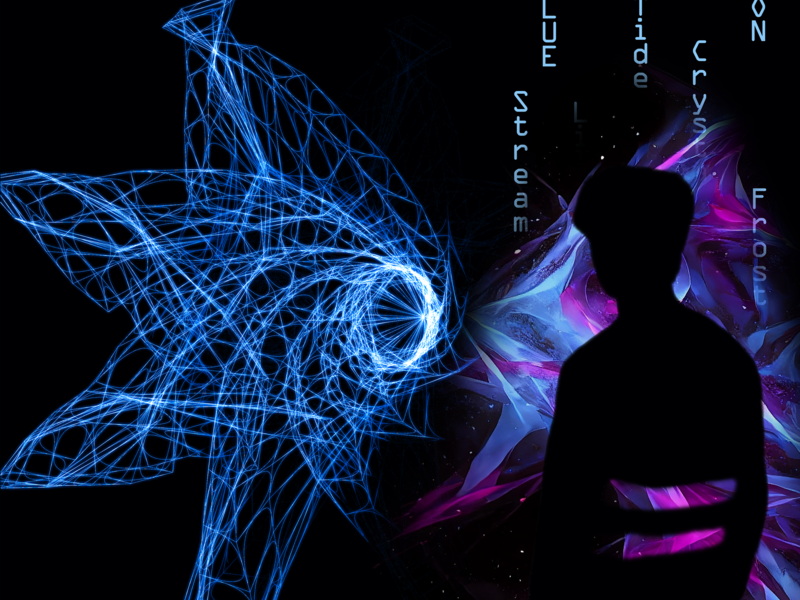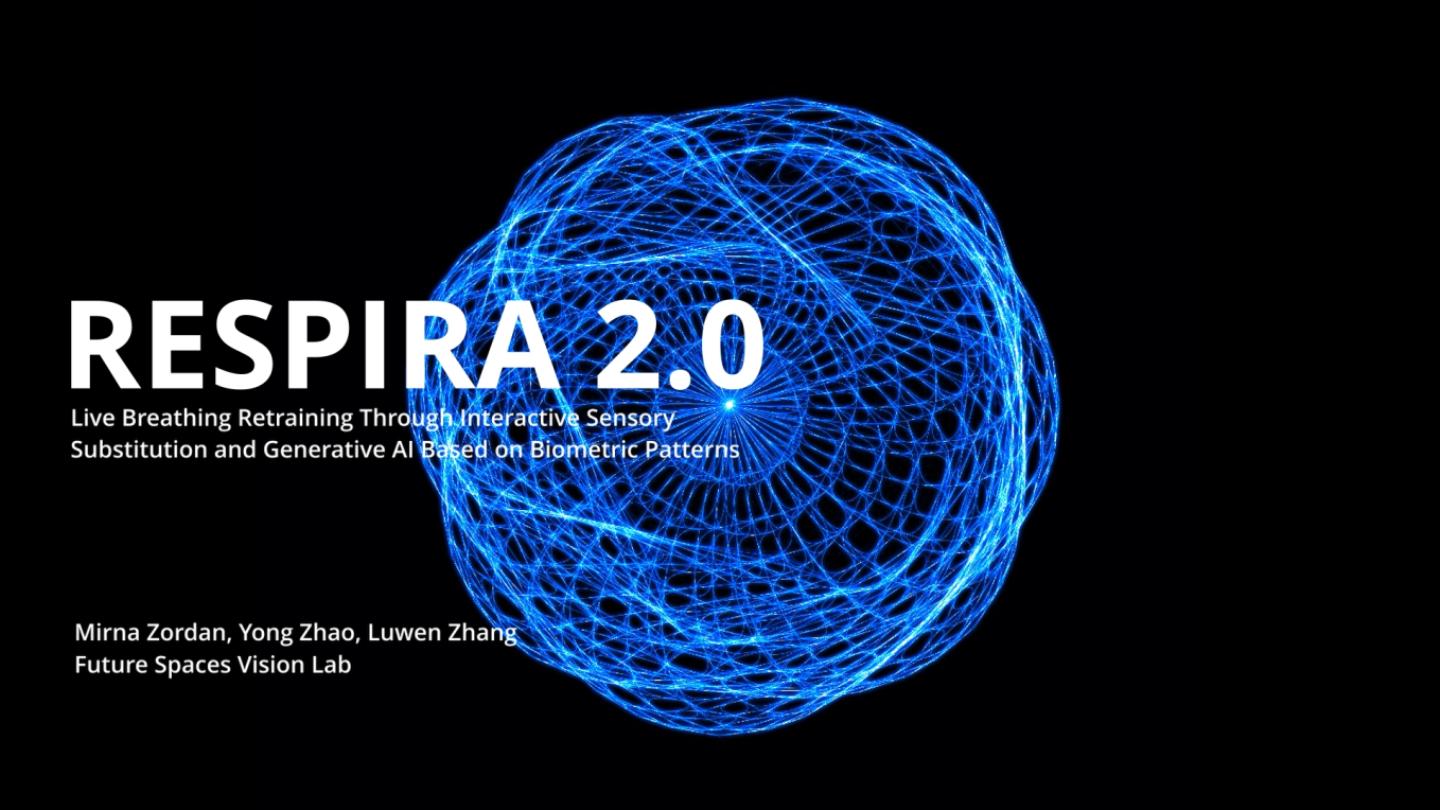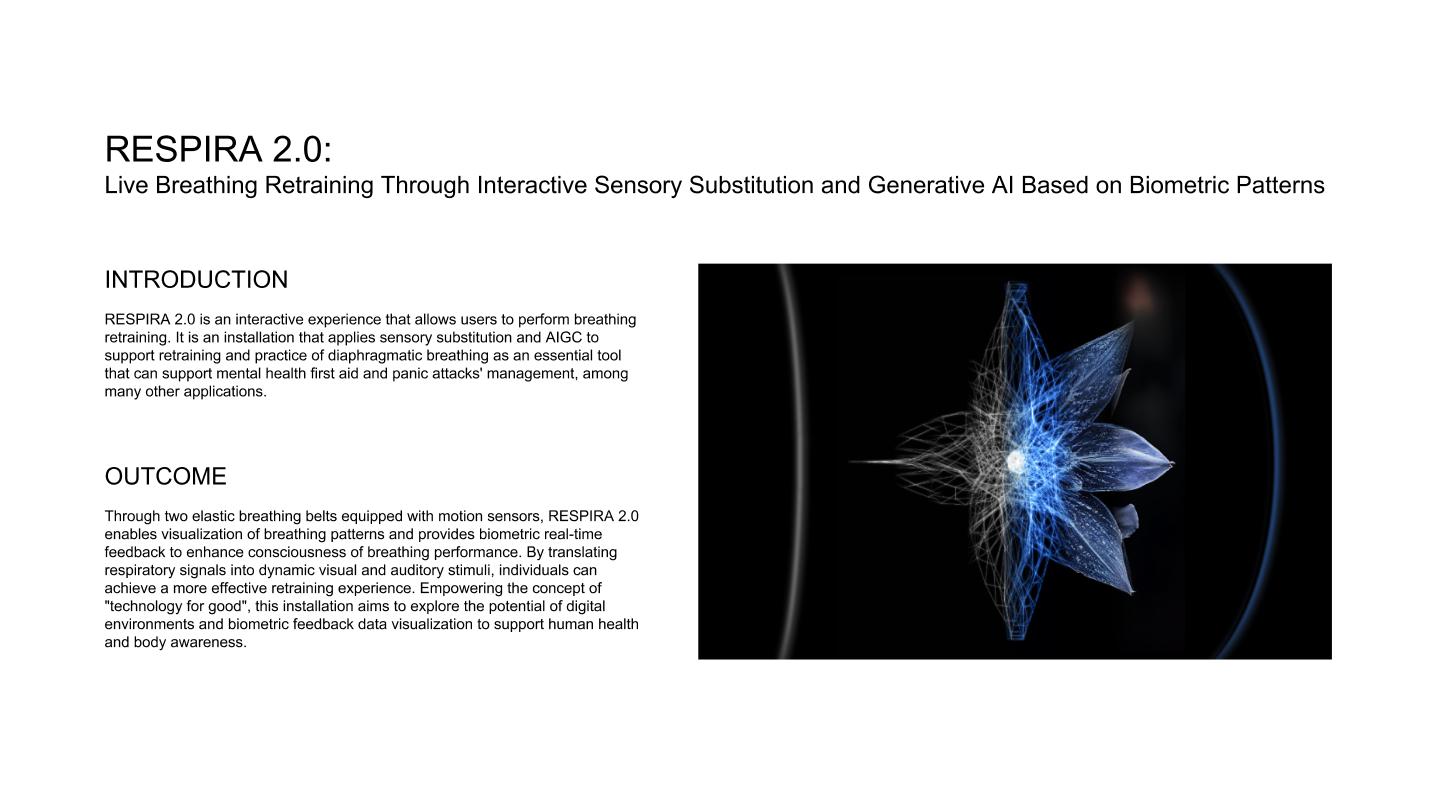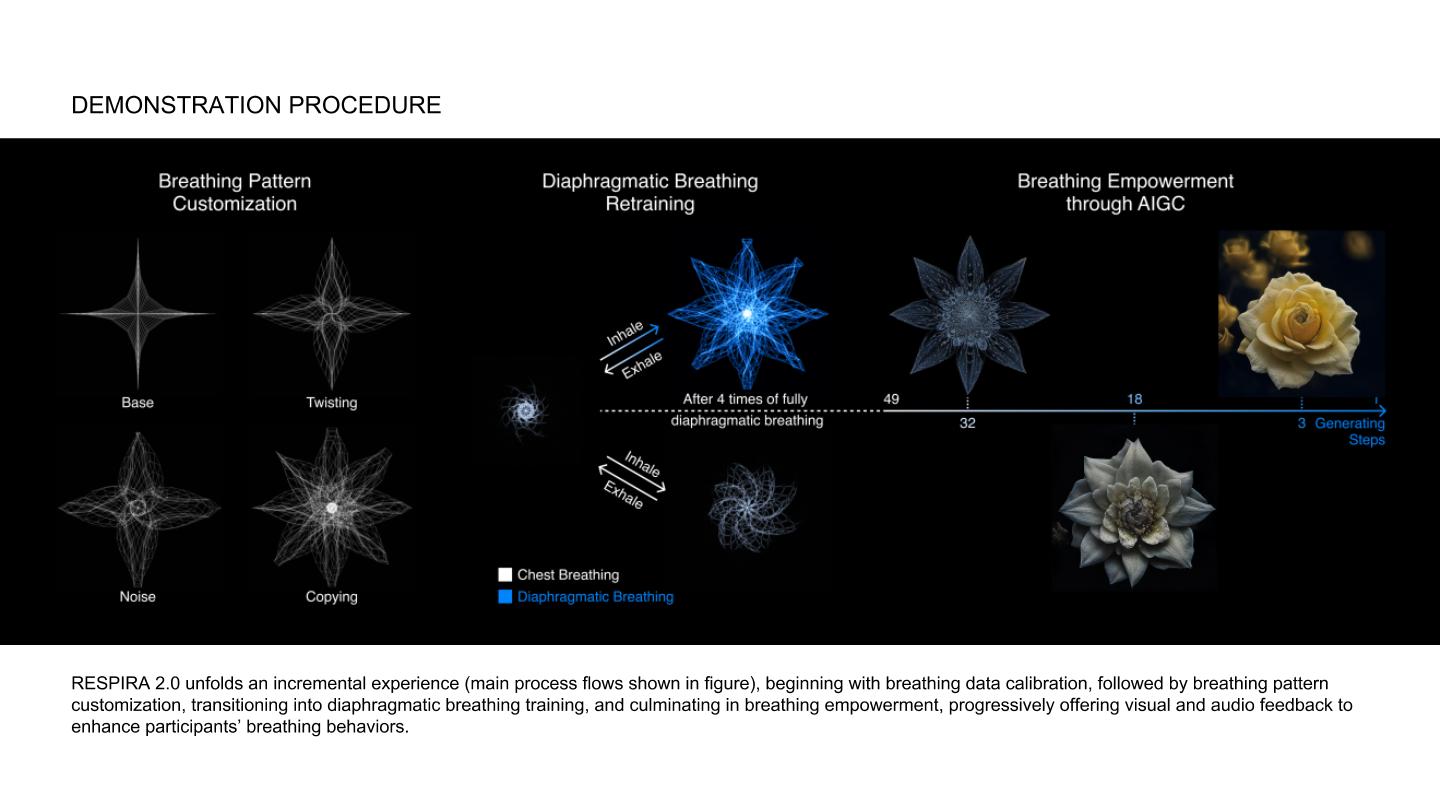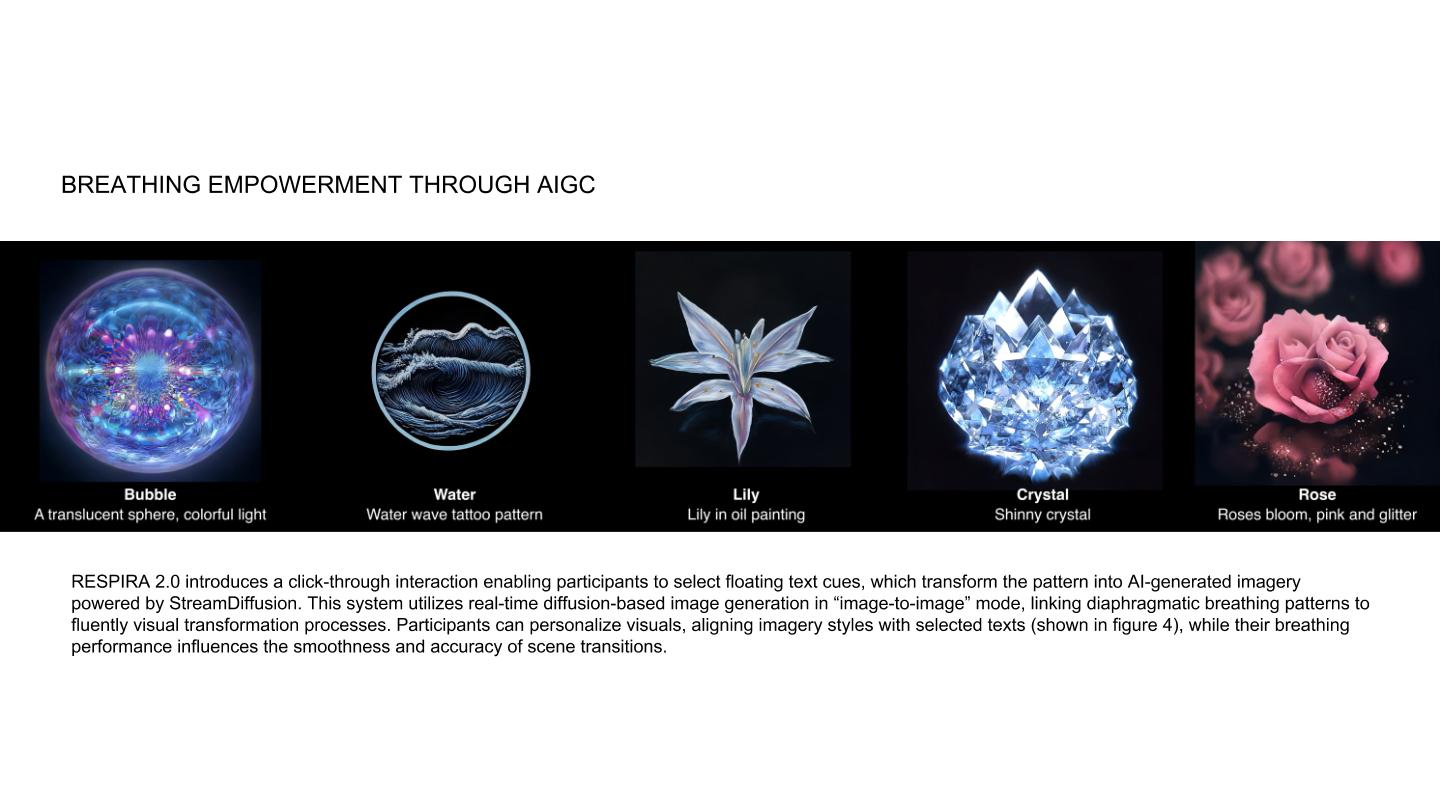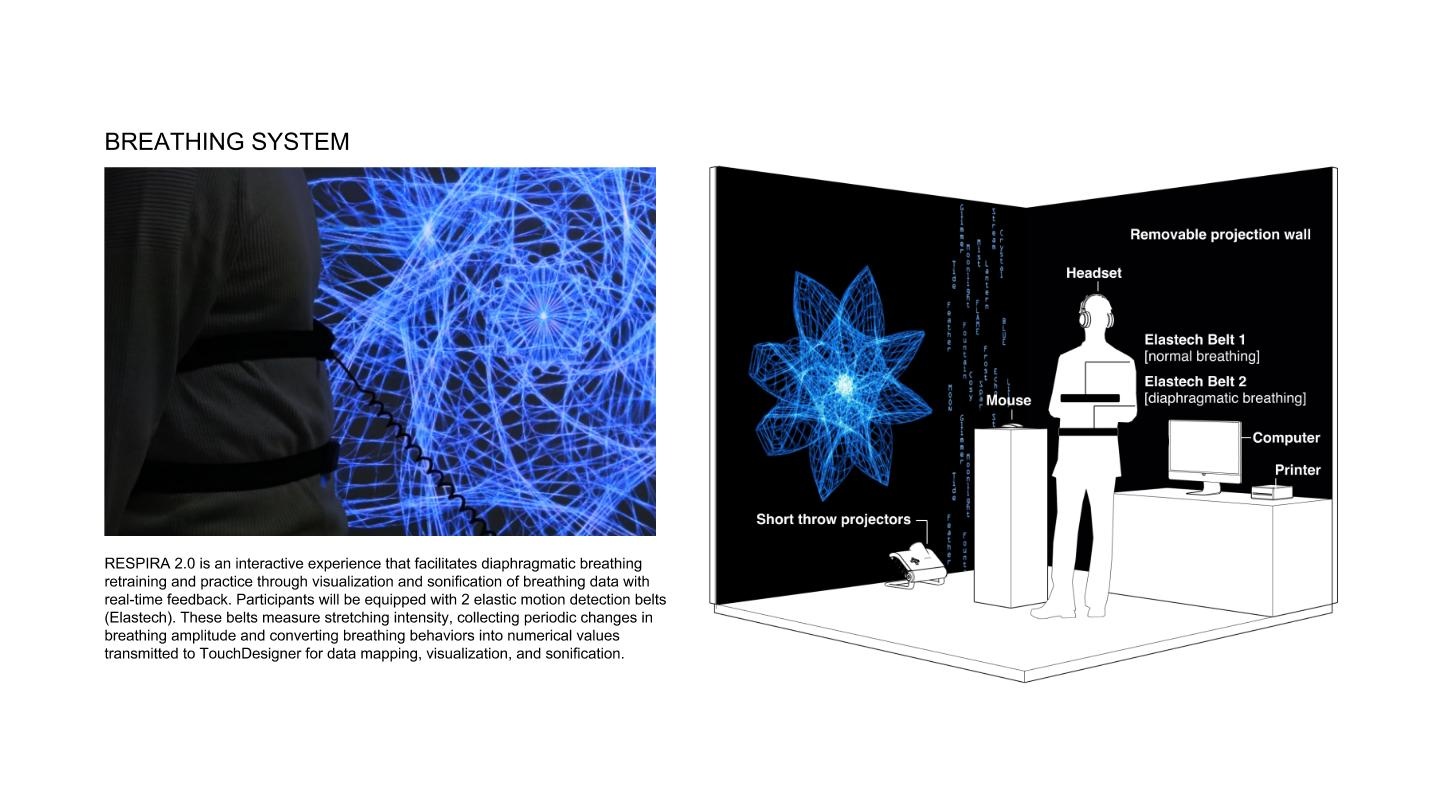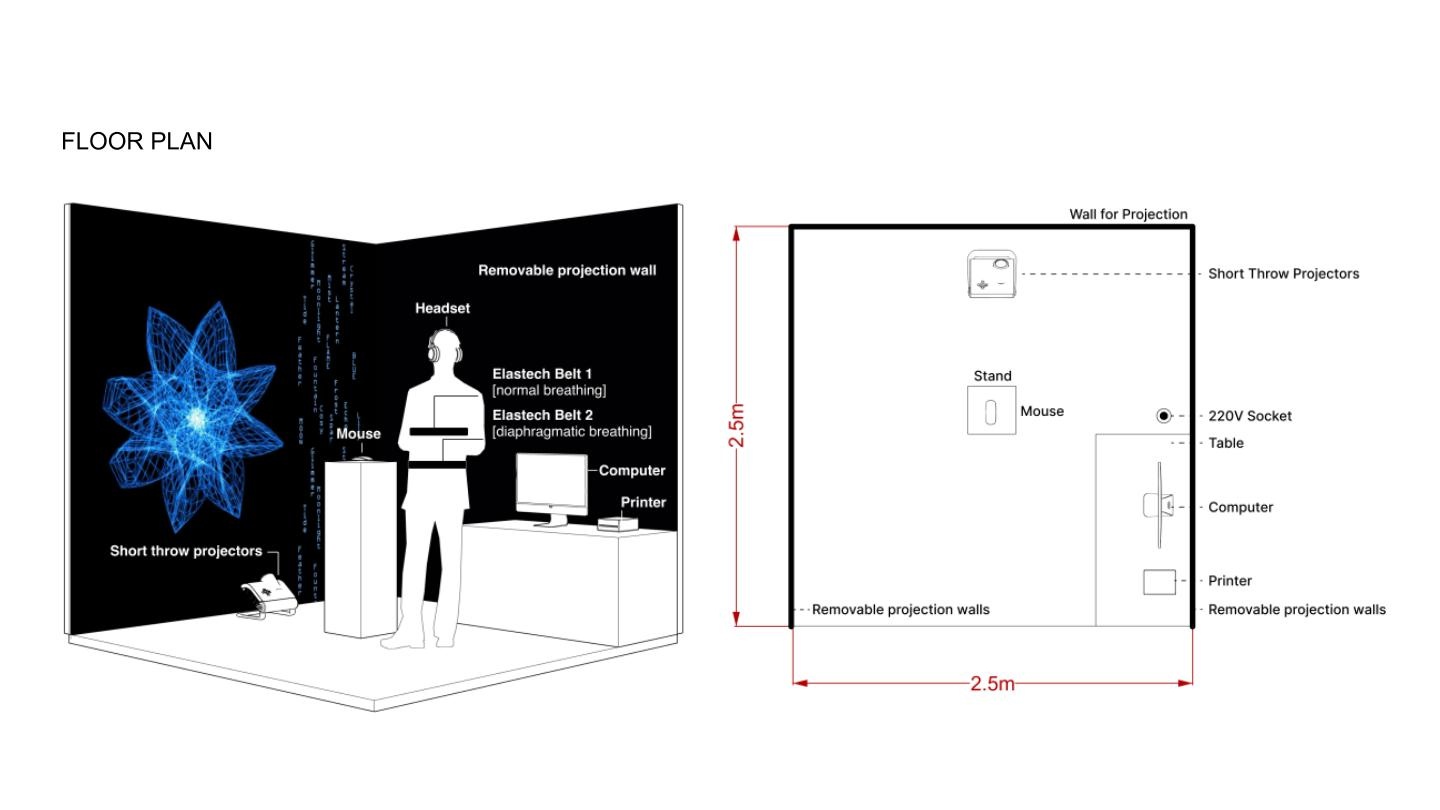RESPIRA 2.0_work proposal
RESPIRA 2.0_Video
Demo

RESPIRA 2.0_Experience image
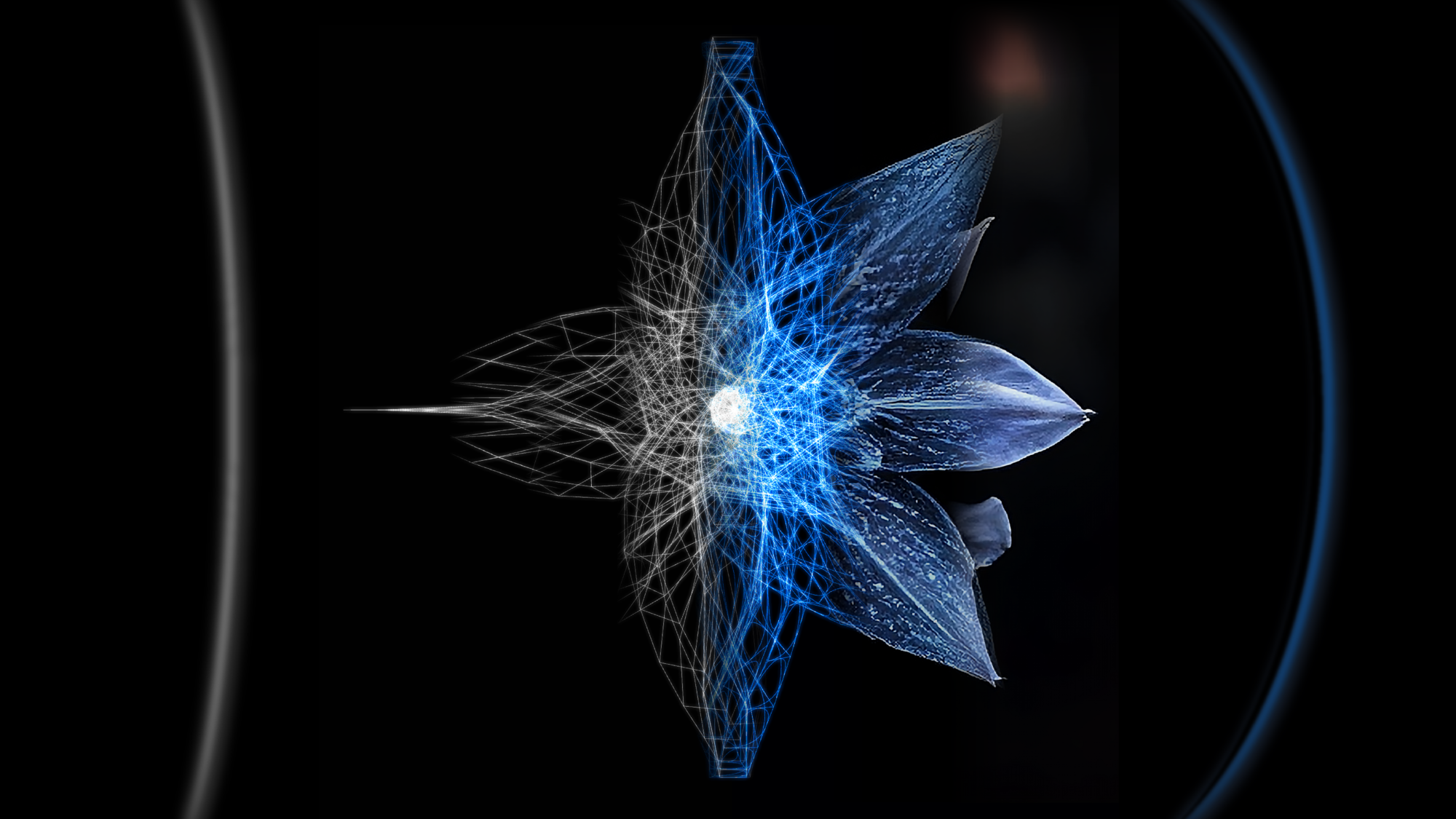
RESPIRA 2.0_Performance image
Respiration is a fundamental act and one of our essential physiological functions. Respira in Italian means "breathe". RESPIRA 2.0, an interactive experience designed to provide users with an intuitive understanding of their breathing patterns, is proposed to arouse their attention to the process of breathing through physiological training. Building on this foundation, the focus is placed on diaphragmatic breathing retraining through sensory substitution. Humans are not naturally trained to perform it; through two elastic breathing belts equipped with motion sensors, RESPIRA 2.0 enables visualization of breathing patterns and provides biometric real-time feedback to enhance consciousness of correct breathing performance.
We aim to present an interactive experience that supports a variety of applications, such as mental health first aid and panic attacks control, by allowing users to retrain their breathing. RESPIRA 2.0 is an installation that applies sensory substitution and AIGC to support retraining and practice of diaphragmatic breathing.
In today's fast-paced society of China, we hope that this installation can provide an effective experience for people to cope with mental health by merging different disciplines and adopting the concept of technology for caring, technology for good, technology for humans.
Mirna Zordan, founder and director of Future Spaces Vision Lab, is an architect and a design instructor with an active interest in exploring how technological interventions can be integrated within digital and real environments to support humans' health.
Yong Zhao is a digital media designer and a research assistant at Future Spaces Vision Lab.
Luwen Zhang is a research assistant at Future Spaces Vision Lab.
Future Spaces Vision Lab is an interdisciplinary group based in SUSTech School of Design currently focusing on Intangible Human-Environment Interactions and their influence on stress levels, human perceptions, and brain activity.







